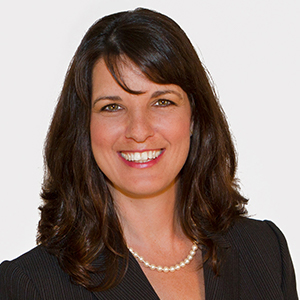We want to let you in on a secret that will help take your nonprofit’s fundraising to the next level. You may have heard it before; you may have avoided it before… a donor management system. Gone are the days of tracking gifts in multiple spreadsheets, writing letters one-by-one, and trying to recall your last conversation with a donor as you’re standing in front of them. Your nonprofit may have a donor management system, but are you taking advantage of all its features? Read on to see how to use it for fundraising, grants, moves management, and lots more.
Using a donor management system for fundraising
A donor management system can help you keep track of a donor’s giving history. This information can be stored in a donor’s profile and makes it easy to run monthly reports on donations, pledges, and more. You might be reviewing a report or donor profile and notice that the donor hasn’t given in some time. This is a perfect opportunity to rekindle your relationship with them by sending a letter. It also serves as an excellent opportunity to introduce new programs and ask for their support.
Your donors love feeling appreciated. No matter the gift amount, they chose to support your organization and mission. Show your gratitude by sending an immediate thank you letter to your donor. Using a donor management system can simplify what used to be an arduous process by allowing you to upload a thank you letter template. You can create a thank you letter while entering the gift into the system with just a few clicks!
Donor profiles are not just for storing gifts. You can also store information that is learned by individuals in your organization as they develop a relationship with the donor. Little but important details can be lost when an individual, such as an employee or a Board member, leaves the organization. Storing small but important details that you learn about the donor’s interests and preferences can help you retain this information overtime on behalf of the organization. Remembering their birthday or dog’s name (because they mentioned it once and you put it into your donor management system) can show that you are truly listening and that can lead to a bigger gift!
Using a donor management system for moves management
One of the best (and often unused) features of a donor management system is moves management. Moves management is the process of taking a donor through the stages of the fundraising cycle, from identification through qualification, cultivation, solicitation, and stewardship. “Moves” are the actions your nonprofit makes with a specific donor, such as phone calls, meetings, and conversations. Moves management ensures a donor gets the attention and care they deserve.
If you are working with a large number of donors, then using your donor database to keep track of the status of your moves can help ensure that they take place in the proper order and within the expected timeframes. Most donor management systems that support moves management will provide you with the option of displaying your upcoming moves on the dashboard of your system. When you log in, you can readily see what moves you need to prepare for that day.
The moves management module of most donor management systems will allow you to print reports on the status of your donors, which lets leaders in your organization see where each donor is in the fundraising cycle. Reports that aggregate data about all donors can give at-a-glance insight into your moves management efforts and how major gift prospects are reacting to your efforts.
Using a donor management system for grants
You can easily track grant proposals and interactions with funders through a donor management system. All of the important information about grants and the funders who make them can be stored in one place. Most donor management systems support tracking of grants submitted, deadlines, notes, and funding status. You can also add fields if you have the need to track a specific category of information that is not offered in the standard grants management screen. Your nonprofit can easily run reports to see impending deadlines or how many of your grant proposals have been funded.
A donor management system can track grant information to help prevent missed deadlines and loss of information as employees and volunteers cycle in and out of your organization. Maybe a funder has notified one of your team members that an extra grant cycle has been added for the year, but that team member leaves your nonprofit and hasn’t told anyone in your organization. If your nonprofit’s practice is to immediately store data about grants in the donor management system, it is far more likely that this type of info will be available to all team members and the deadline will be met.
Use your donor data to take the organization to the next level
Running reports on your donors will help you understand their giving histories and how they respond to your solicitations. You can evaluate your list of donors and segment them into categories. For example, who are your major gift prospects? Who are your planned giving prospects? Which donors only respond to postal mail? Which donors were connected to the organization by a particular Board member? Who attended your gala last year? The last two years? The last five years?
There are three things that are important to all nonprofits that want to increase their fundraising income: new donors, retained donors, and average gift size. If you increase all three of these in one year, your organization will increase fundraising income over the previous year. Most donor management systems will readily produce a report of new donors over any specific period of time you indicate. Some systems will also give you average gift size, retention rates, number of retained donors, with a comparison to previous years. If you need help running these reports, check your donor management system’s help section for articles and videos on how to run these reports. Tech support can also help walk you through the steps by email, chat, or phone, depending on the level of support service you’ve invested in.
Attracting new donors can be accomplished in many ways, so it can be helpful to track in your system how your new donors were acquired. There is usually a field set up for this, but if not, consider adding a field so that you can later run reports on where your new donors are coming from. If your data shows that a particular source of donor acquisition is really effective, you can budget and plan to do more of that activity in the next fiscal year.
Donor retention is impacted by a variety of factors. Two important strategies in donor retention are acknowledgment and appreciation. Another is to communicate the impact of their gifts. Still another is to offer a variety of opportunities and ways to give. Look for another blog post on this important subject. But there is an important point to make here: your donor management system can help make donor retention easier.
Ways to increase donor retention using your donor management system:
- Produce thank you letters quickly so that you can send them in a timely manner.
- Produce lists of recent donors for your Board members, with names and addresses or email addresses, so they can send a personal note of thanks.
- Offer a variety of ways to give, then track the ways that the donor prefers and match similar opportunities to that donor in the future.
- Produce a monthly list of donor birthdays and send a birthday greeting to each donor who has an upcoming birthday.
- Use the data stored about your major gift prospects to refresh your memory prior to visits, allowing you to recall the little details they shared in the past about their preferences and interests.
- Segment your list into those who prefer postal mail and those who read emails and send out an impact report to donors in the way in which they are most likely to read it.
- Run a list of donors who provide recurring gifts and plan a special appreciation activity for them that acknowledges the way they sustain the organization over time through gifts that can be counted on.
The possibilities are endless! The more you know about your donors and their preferences, the more you can tailor the retention activities to them.
Your donor management system can also be used to help increase average gift size. By creating personalized gift requests that suggest an amount slightly higher than the year before, you can move the gift size up for some of your donors. In addition, you can run reports to identify those at different gift levels and plan fundraising activities that are tailored to those levels. For instance, you can plan a special reception for donors who gave at a specific level and then follow up with a special ask that is higher than they previously gave. However, the best way to increase average gift size is to increase the number of major gifts. This topic is the focus of a number of our blog posts, so read on for more info!
There are many robust donor management systems out there. Explore the features of a few before deciding which one is best for your organization. Be sure to have more than one team member test it out. These systems can serve a variety of needs, so be sure your team has a good understanding of its functions. If you need help or have any questions about donor management, please reach out to us. We want the best for your organization and, using your donor management system more fully, you’ll be able to maximize your impact in no time.






